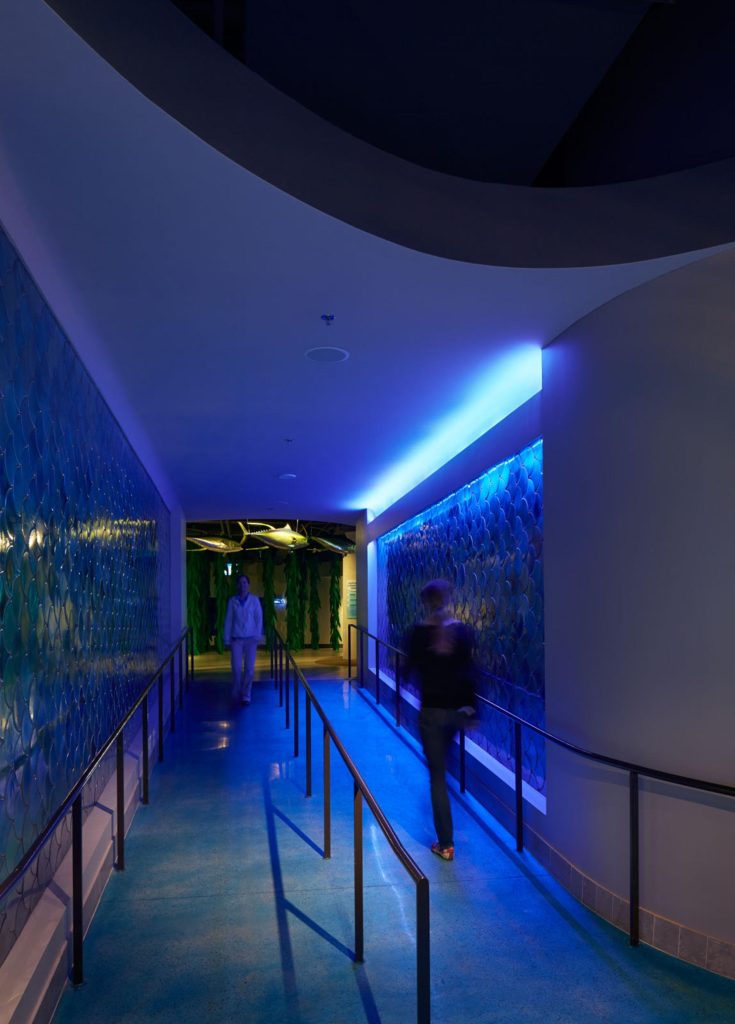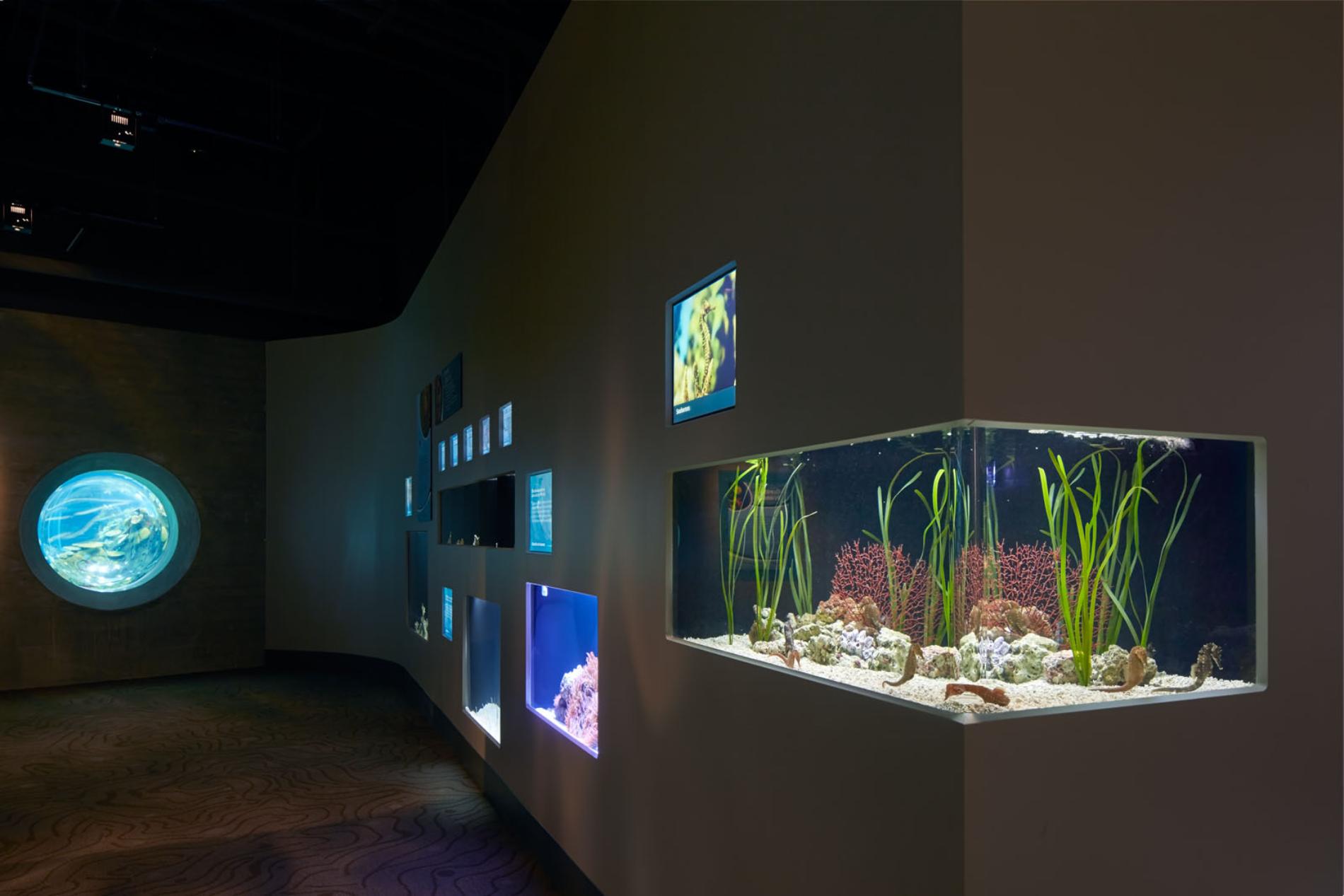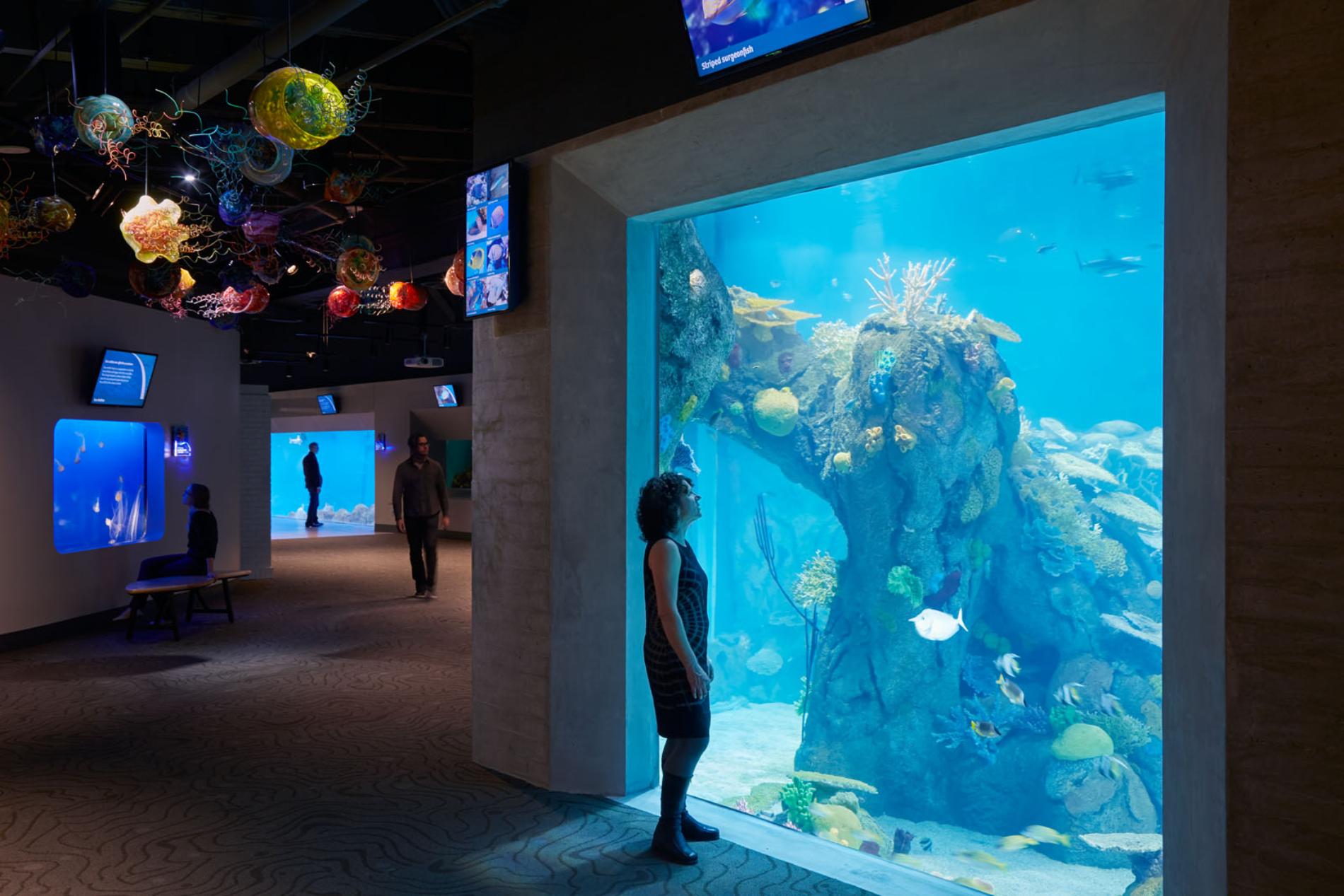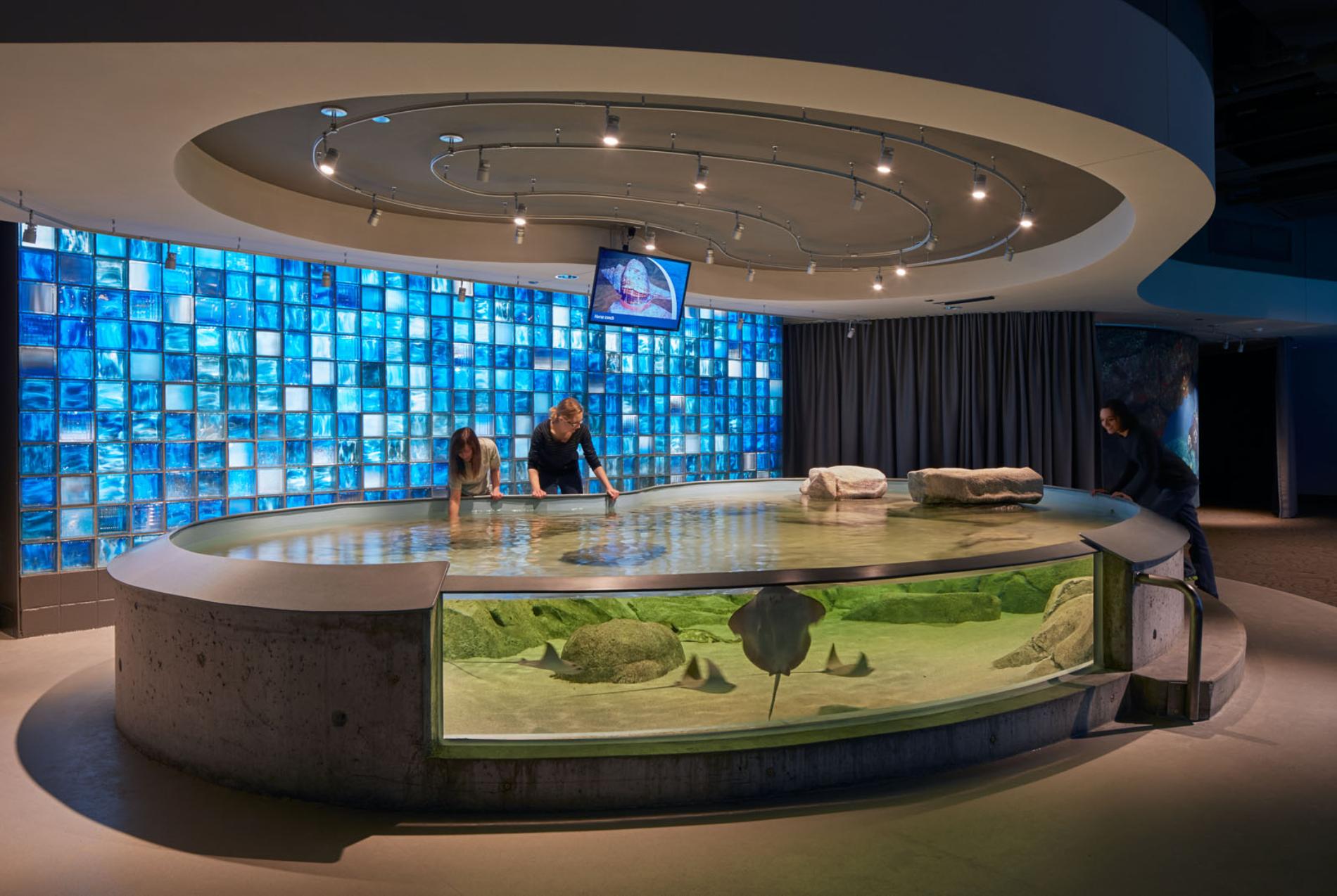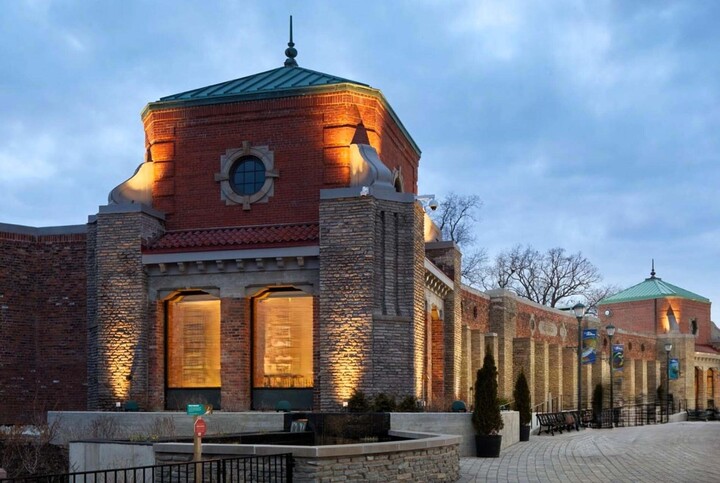Updating the mechanical systems provided several unique design challenges. The new exhibits would increase the water volume from 46,000 gallons to 178,000 gallons with minimal the impact to building operating costs. With the exhibit water increasing four-fold, so did the requirements for aquatic life support and building utility systems. Space was at a premium and JDRM worked closely with the entire design team to coordinate installation of all the new additional systems without expanding the building structure or changing the building appearance.

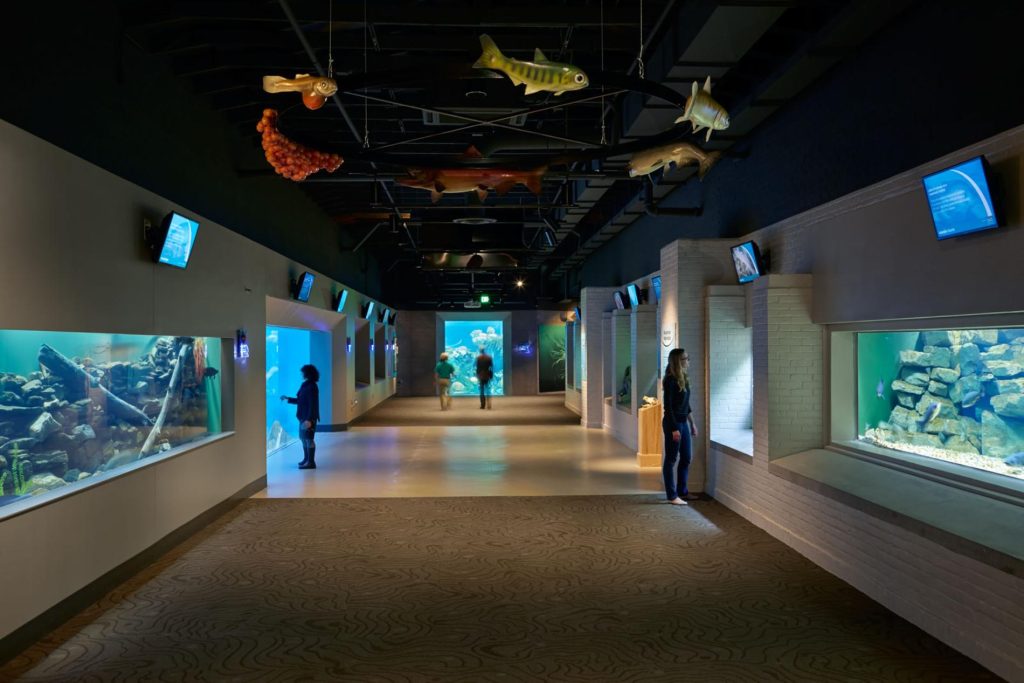
The entire Zoo complex power supply was reviewed and power correction capacitors were added to improve the overall power utilization. A pad mounted switch was installed in order that the 277/480V service and 120/208V service serving the Aquarium could be isolated from the existing 12,470V loop. Isolation transformers were used to minimize harmonics and to increase the building’s power factor. PLC Controls were added to minimize the generator kW required and to maximize the usage of the existing generator.
To enhance visitor engagement in the exhibits several audiovisual systems were designed. At each exhibit/tank instead of static signs describing tank content, video monitors are utilized which allow more dynamic information display. An extensive multi-zone audio system allows different background audio in each area of the aquarium. This helps to set the mood and theme of individual exhibit areas. In addition to background audio, wireless microphones may be utilized throughout the aquarium. The microphones allow voice amplification for presenters and at the dive tank the system integrates with the diver microphone system so guests may ask and receive answers to questions while the diver is underwater.
